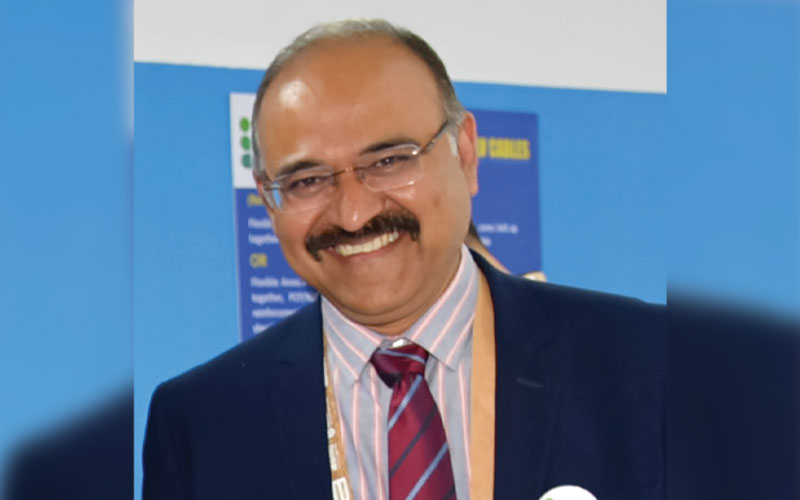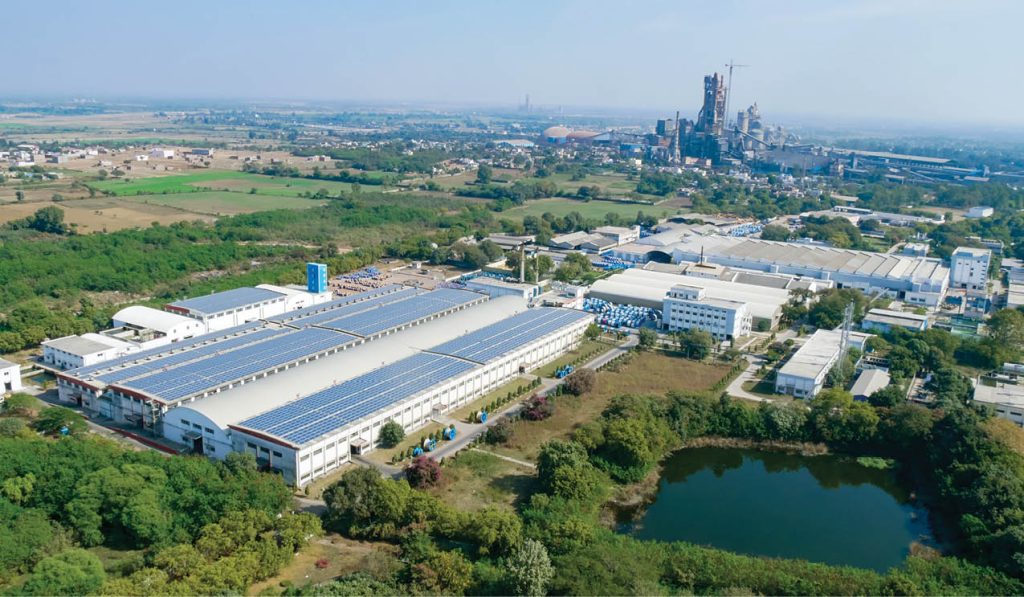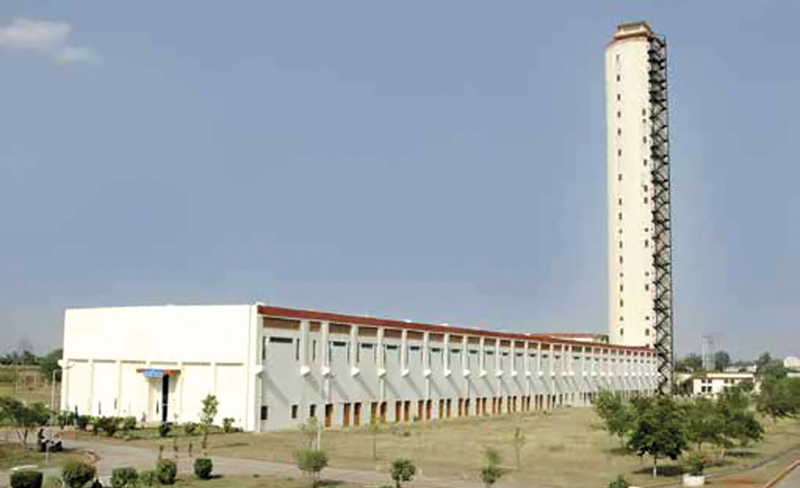Established in 1962, Universal Cables has championed the design and development of EHV XLPE cables in India using most updated Vertical Continuous Vulcanization (VCV) technology. Their current annual production capacity of EHV cables is approximately 900 Kms. Further, it is the only company in India to have seamless aluminium sheathing facility to produce seamless corrugated aluminium & smooth aluminium sheathing cables. UCL is also the first company in India to install technological novel Vertical Continuous Vulcanisation (VCV) lines to process the true simultaneous triple extrusion in single cross head with X-Ray units & Supervisory Control And Data Acquisition (SCADA) for online monitoring and control of dimensions and process parameters. In a recent interview with Wire & Cable India, Mr. Tarun Chugh, Chief Marketing Officer, Universal Cables Limited talks about the latest innovation in their company and how it is composing one of the best-in-class cables manufacturers in India.

Wire & Cable India: What types of EHV cables and/or conductors do you manufacture for power transmission and distribution systems, and how do they differ in terms of properties and performance?
Tarun Chugh: We are manufacturing a full range of EHV XLPE cables, right from 66 kV to 400 kV, for cable sizes up to 3000 mm2, which is the highest conductor sizes used in India as of now. We are manufacturing EHV XLPE cables using most updated Vertical Continuous Vulcanization (VCV) technology, ensuring perfect concentricity and longitudinal stability of insulation desired for cable quality and long service performance. Universal Cables Limited (UCL) is also the first company in India to install VCV lines.
WCI: What recent innovations have developed in your technology for enhanced efficiencies in power transmission? Have you incorporated these into your products, and how do they improve performance or reduce costs?
TC: Innovation and advancement in technology is a continual and ongoing process. We are offering large sizes of cables with segmental conductors to have enhanced current carrying capacities of cables. We are also offering higher copper cross section EHV cables with enamelled conductors, which further enhance current carrying capacities of cables. We are also offering engineering solutions on installation and sheath bonding arrangements of cables for efficient transmission of power with minimum losses depending on site conditions.
We have all variants of metallic sheath facilities required for EHV cables – i.e. lead sheath, aluminium sheath and poly-laminated aluminium sheath. In aluminium sheath, we have two variants – seamless and seam-weld sheath. We are the only company in India to have seamless aluminium sheathing facility. For aluminium sheath EHV cables, conventionally having corrugated aluminium sheath, we have also developed smooth aluminium sheathing cables which compared to corrugated sheath, offers compact cable construction, smooth cable surface, better corrosion protection, lower cable diameter with improved bending properties for ease in handling and installation, and longer delivery length which results in reduction of cable price and project cost to an extent.
Watch: Top Cable Companies in India
WCI: What quality control processes are in place to ensure the EHV cables/conductors meet industry standards and meet reliability and safety benchmarks for various environmental conditions?
TC: The EHV cables are manufactured in an extremely clean environment, and have a completely closed process. Our VCV lines are installed with SIKORA X-Ray units & Supervisory Control And Data Acquisition (SCADA) for online monitoring and control of dimensions and process parameters, to ensure quality product with consistent quality.
All the process data are recorded for each and every length. The cables are subjected to critical quality checks and tests at each and every stage of manufacturing process, and the finished cables are subjected to final routines and samples tests before going out of the factory.
WCI: What is the typical lifespan of your EHV cables/conductors? What value-added services – such as engineering support, installation guidelines, maintenance etc. do you provide to customers in the field?
TC: The life of cable is not dependent on cable quality alone. It also depends on how well the cables are handled and installed at site, including the quality of accessories, installation of accessories (joints and terminations), bonding arrangements and maintenance of cable systems to protect from any third-party damage.
However, typically the cable life may be considered as thirty to forty years, and may go beyond this also, if all the above factors are considered.
WCI: What is your total production capacity and what target are you eyeing? To what markets do you majorly cater?
TC: Our current annual production capacity of EHV cables is approximately 900 Kms, which we have already peaked and are exploring to enhance our capacity by upgrading our manufacturing lines. The major customers in the EHV segment are government and private electricity transmission companies and EPC companies operating in the transmission segment.
WCI: Tell us about your major orders bagged recently.
TC: We are actively engaged in multiple projects with leading transmission utilities across the country, contributing to the development of critical infrastructure. Additionally, a significant portion of our products is being exported to various international markets, further expanding our global presence.
WCI: Please walk us through your unique manufacturing set up. What new technologies have you invested in to cater to the demanding market?
TC: We are manufacturing EHV cables using VCV technology which is a unique process with distinct benefits in terms of product quality as compared to conventional processes. We also have a seamless aluminium sheathing line which is unique and we have no competitor in India having this line. We have also developed a smooth aluminium sheathing process, which is also a unique process that requires a specific set of machinery and technical know-how.
As we are catering to export customers, our testing laboratory is equipped with some special testing equipment like – Head Space Gas Chromatography (HSGC), Thermal Gravimetric Analysis (TGA), and Karl Fischer Titration equipment for special tests.
Also Read: Dynamic Cables Launches Next-Generation HTLS Conductors
WCI: What are some of the major challenges you are experiencing in the market?
TC: EHV cables play a critical role in the transmission sector. However, for quite some time, from EHV cable perspective, the government has shifted their focus towards the distribution sector rather than transmission. Additionally, the parliamentary and state elections, over the past year, have led to delays and the postponement of several projects. However, the situation is now improving, with projects gradually resuming their course.
WCI: Where do you see the market headed in the next 5 years, in terms of growth, innovations, technology integration and new challenges? How do you see yourself in that landscape?
TC: The EHV cable market is projected to grow at a robust compound annual growth rate (CAGR) of 15% over the next five years. As the demand for HVDC and submarine cables rises in the coming years, there is a significant opportunity in this segment. However, currently, no Indian cable manufacturer provides comprehensive solutions for these advanced technologies. But there is huge scope for this segment in the future.






